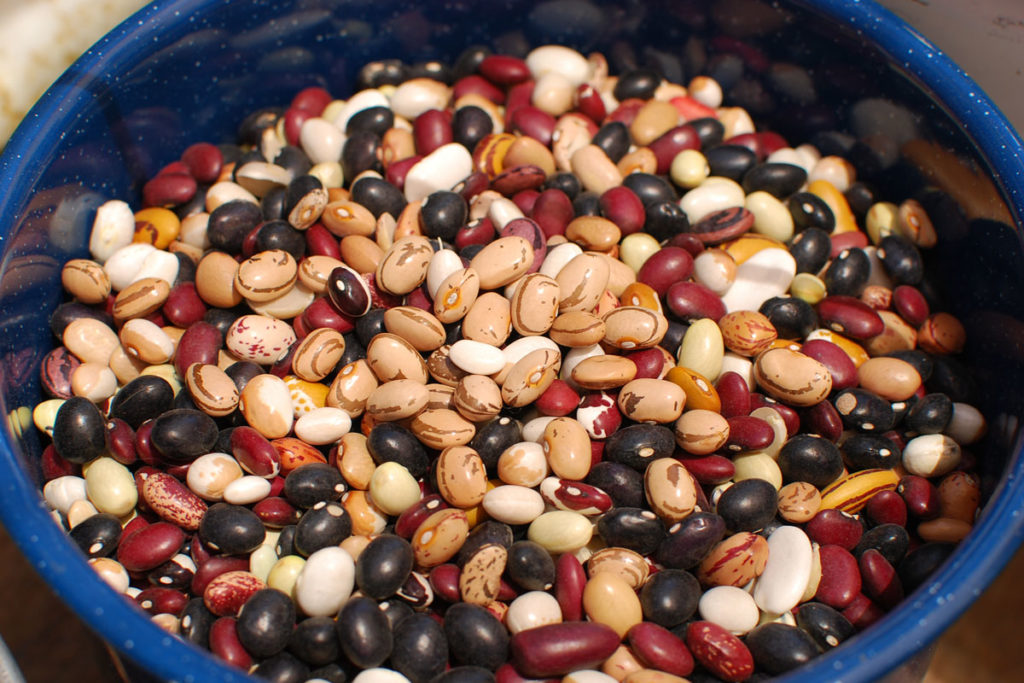Dried beans

Beans (members of the legume family, Fabaceae) are among the oldest cultivated plants. They are second only to grains in supplying calories and protein to the world’s population, and contain two to four times as much protein as grains. When beans are eaten with grains, they form a complete protein. Beans tout a long list of health benefits such as lowering cholesterol levels, regulating blood sugar, and preventing cancer. Their high fiber content keeps you feeling fuller longer.
Beans can be found both fresh and dried in the farmers market, but fresh beans are typically only available in summer and fall. Dried beans have a longer shelf life and are thus available year-round, making them an important food staple. Cooking dried beans is more economical and nutritious than buying canned beans. Canned beans usually contain high levels of sodium and preservatives, and many cans are lined with BPA, a chemical known to cause cancer and disrupt hormonal function.
Beans are known to cause flatulence due to the presence of oligosaccharides that are digested by bacteria in the intestine, producing carbon dioxide. Soaking beans overnight is thought to reduce these effects, while adding spices like ginger, turmeric, and asafetida can also help. Sprouting beans also significantly eases digestion and absorption. Drain the soaking liquid and then rinse the beans with clean water. Bring the water and beans to a gentle boil, lower the temperature to a simmer, and cook until the beans are tender. Cooking times and the amount of water needed depend on the type of beans. Adding salty or acidic seasonings like vinegar, tomatoes, or lime while cooking the beans will make them tough and increase the cooking time. Reserve the cooking liquid, since B vitamins and folic acid leach into the liquid while the beans are cooking.
